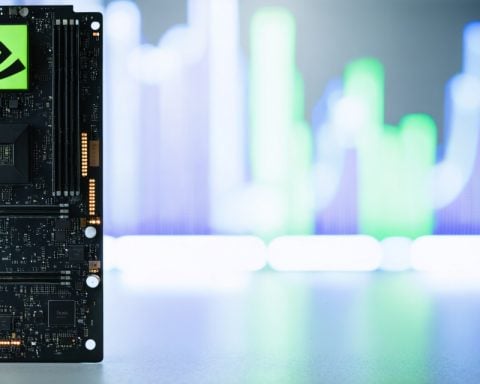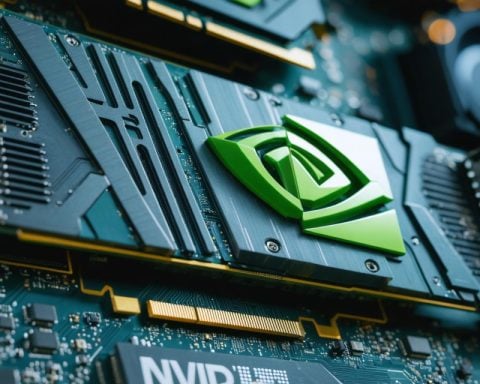- Electric vehicles (EVs) can serve as vital power sources during emergencies, such as power outages caused by natural events like fires.
- A Southern California homeowner used his EV to power essential electronics for three days during a Public Safety Power Shutoff.
- By connecting a 120-watt inverter to his EV, the homeowner maintained crucial communications and device functionality amid chaos.
- This experience underscores EVs’ potential to support household needs when traditional power sources are unavailable.
- Emerging EV technologies, such as Vehicle-to-Load (V2L) and Vehicle-to-Grid (V2G), enhance these capabilities, though even standard setups can provide significant utility.
- As EV technology progresses, these vehicles may evolve into versatile power solutions beyond their transportation role.
When fierce winds whipped through Southern California, the threat of fires loomed large. In a region all too familiar with the sudden darkening of homes during Public Safety Power Shutoffs (PSPS), one homeowner discovered an unexpected ally: his electric vehicle (EV). The utility’s precautionary measures left many in the picturesque but perilous reaches of Orange County without power, stripping away vital communication lines. Yet, amid the relentless chaos, one innovative homeowner turned to his sleek, silent EV as a beacon of connectivity.
Imagine a dimly lit house where the only hum comes from an EV quietly powering crucial electronics. As flames licked the horizon, this resolute resident connected a 120-watt inverter to his car, drawing energy to recharge devices and reignite communication channels. For three anxiety-ridden days, his EV transformed into a lifeline, keeping him informed and connected, proving that technology can indeed shine in the darkest of times.
This story highlights the untapped potential of electric vehicles as more than just modes of transport. Their latent power can sustain crucial household circuits when traditional power sources falter, a lifeline woven from modern ingenuity. While some newer models incorporate Vehicle-to-Load (V2L) and Vehicle-to-Grid (V2G) capabilities, even the traditional setups can be harnessed innovatively with the right tools.
As EV technology evolves, their role in our lives may well transcend commuting, transforming them into versatile, mobile power stations. These modern marvels could be the key not just to a cleaner planet but also to a safer, more resilient life amidst the unforeseen challenges of nature. Your EV might just be your home’s unsung hero in the next power outage.
Discover the Hidden Power of Your Electric Vehicle During Emergencies
How-To Steps & Life Hacks for Using Your EV in a Power Outage
1. Invest in an Inverter: To power household electronics, you’ll need a car inverter, which converts the DC power from your EV battery to AC power for household use. Ensure it matches your EV’s output and the requirements of your devices.
2. Identify Essential Devices: Prioritize recharging and powering critical devices such as phones, laptops, and communication tools to stay connected during an outage.
3. Find the Power Outlet: Most EVs have a standard 12V power outlet. Plug your inverter into this outlet to begin powering your essential devices.
4. Monitor Usage: Regularly check the charge level of your vehicle to ensure you don’t deplete the battery entirely, especially if a longer outage is expected.
5. Explore Built-in Features: For newer EV models with V2L or V2G capabilities, learn how to operate these features to power your home directly from the car.
Real-World Use Cases
Apart from emergencies, EVs can serve as useful backup power solutions during planned outages or camping trips. They’ve been utilized in disaster-prone areas, where utility disruptions are common, providing an interim power source for essential communication devices.
Market Forecasts & Industry Trends
The Vehicle-to-Grid market is projected to grow significantly, driven by regulatory incentives and the increasing global demand for sustainable solutions. According to a report by Allied Market Research, the V2G technology market is predicted to reach $15.03 billion by 2027, showing a compound growth rate of 48.6% from 2020.
Reviews & Comparisons
Pros:
– Immediate backup power source during outages
– Cleaner energy solution compared to generators
– Potential reduction in utility costs with V2G technology
Cons:
– Limited power capacity compared to conventional home generators
– Battery wear concerns over repeated deep discharging
– Higher initial investment for V2G-capable vehicles
Controversies & Limitations
While promising, V2G technology faces challenges, such as battery degradation over repeated charge cycles and the need for electricity grid infrastructure upgrades to handle bidirectional power flow. Critics also note the high upfront costs and limited availability of V2G-compatible models as barriers.
Security & Sustainability
From a sustainability standpoint, using an EV as a power source reduces reliance on fossil fuel-based generators, offering a cleaner alternative. In terms of security, the main focus is on data safety, ensuring that V2G systems don’t expose homeowners to cybersecurity risks.
Actionable Recommendations
– Prepare: Before a power outage hits, practice setting up your EV to power your home, ensuring you’re familiar with the process.
– Stay Charged: Keep your EV at a higher charge level during storm seasons or in areas prone to outages.
– Evaluate Technology Options: If you’re considering purchasing a new EV, research models with V2L or V2G capabilities for enhanced functionality.
By tapping into the underutilized power of EVs, you can enhance your energy resilience and sustainability during power outages. Becoming familiar with these features ensures you’re prepared to leverage this emerging technology effectively.
For more about electric vehicles and sustainable energy solutions, visit Energy.gov or EPA.gov.














